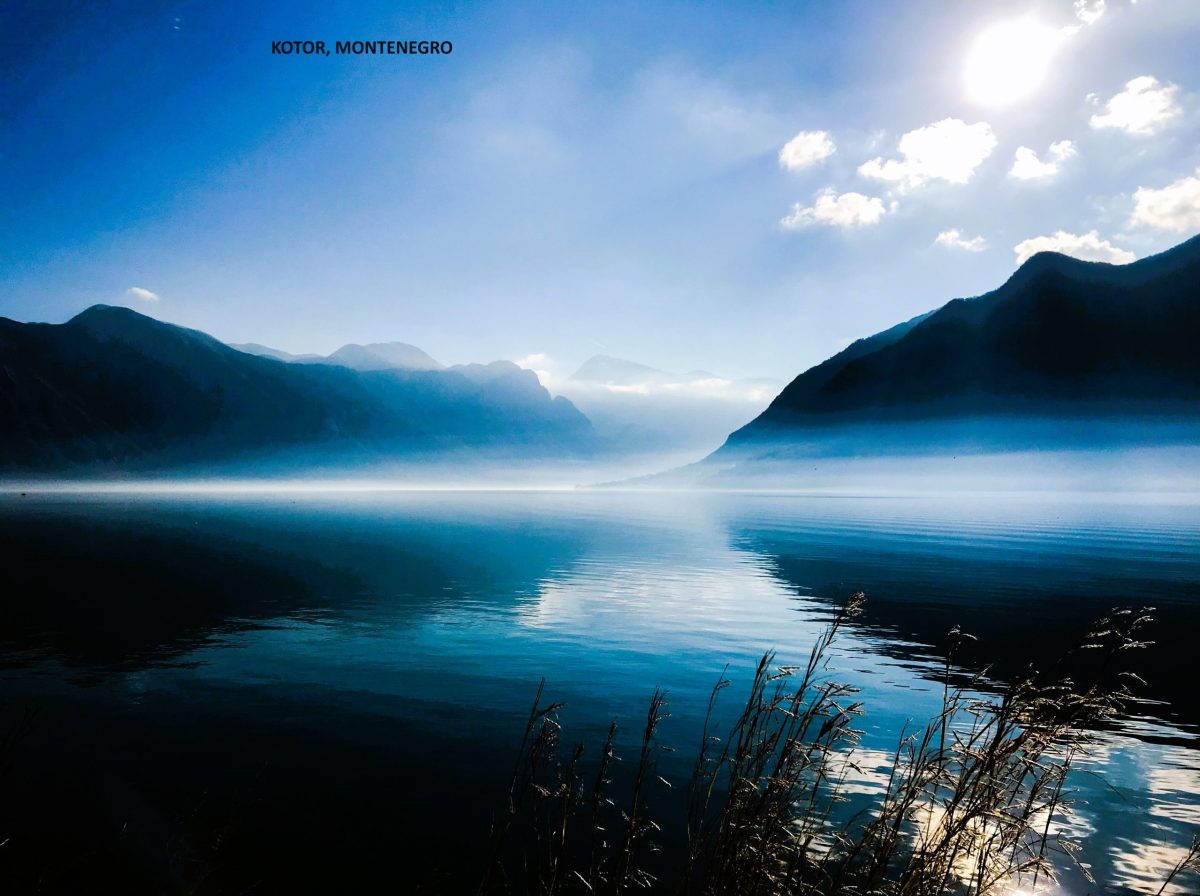I don’t know how it was that Vanya picked out Penafiel as our next point of call but I’m glad she did. We parked at Camping Riberduero on the edge of Penafiel with a view to staying a couple of days and then stayed for four. With the help of the Dutch owners of the campsite (they were a mine of useful information) we were able to maximise our stay in Penafiel and enjoy much of the surrounding area (most especially Pedraza, Sepulveda and the Hoces del Rio Duraton National Park). We’d have stayed even longer except that we were already commited to being in La Rioja by the end of the week.
Penafiel is a fairly small rural town of some 5,000+ inhabitants in the Valladolid Province of Castile y Leon. Although renowned for it’s 10th century limestone castle and extensive winemaking traditions, Penafiel is well off the beaten track and, nowadays at least, not a popular tourist destination. It wasn’t always so (in Medieval times this was a major city with no less than 19 churches) but it’s current smaller size and the absence of tourists suits us down to the ground.
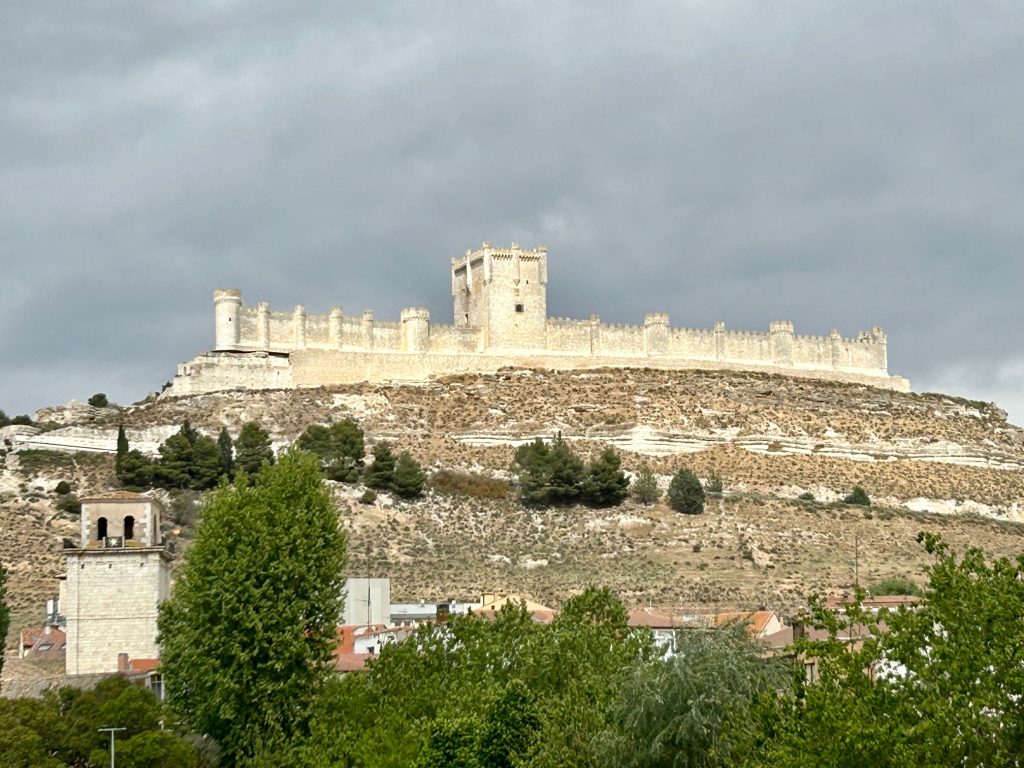
The unusually shaped Castillo de Penafiel dominates the town.
Building of the existing castle (Castillo de Penafiel) commenced in the 10th century on a cigar shaped rock which overlooks Penafiel and the Rivers Duero and Duraton. Since then the castle has been significantly remodelled, mostly during the 14th and 15th centuries, to resemble a white 150+ metre long German Gothic Style Battleship. My first thought was to check out the castle. It’s an easy walk up to and around the outside of the castle with not too much exposure. However, mine is clearly not the customary approach because, after clambering over the outside wall and in, I almost frightened the life out of a couple who were already there having used the road up.
Nowadays, the castle is home to the Provincial Wine Museum which offers castle tours and wine tasting sessions at very reasonable prices but they were not open for business as I arrived. In fact, very few places are open in Penafiel during siesta time which, during the week, stretches between noon and 4pm. This is real Spain.
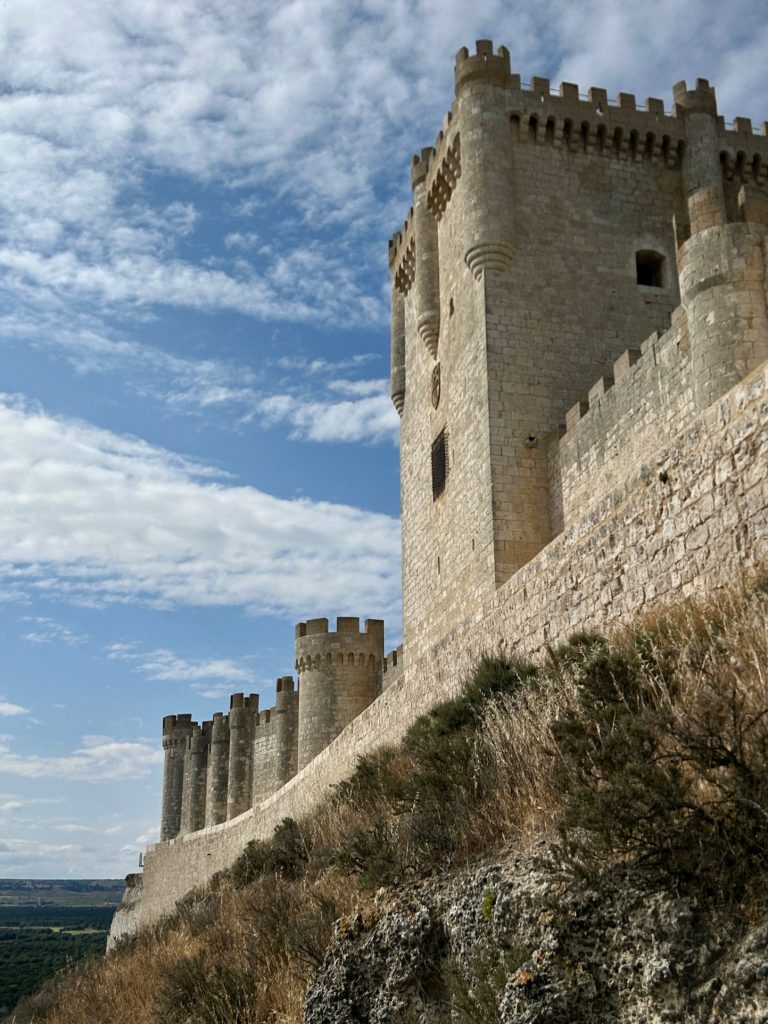
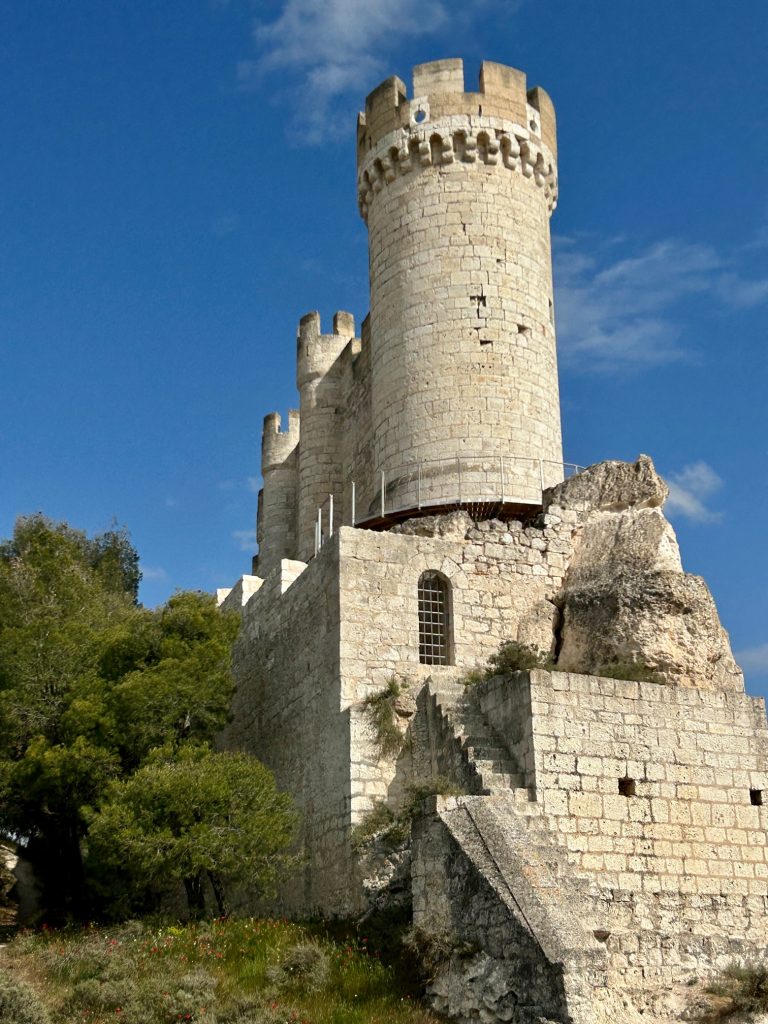
There are actually two lines of castle walls. I was able to climb the outer wall only.
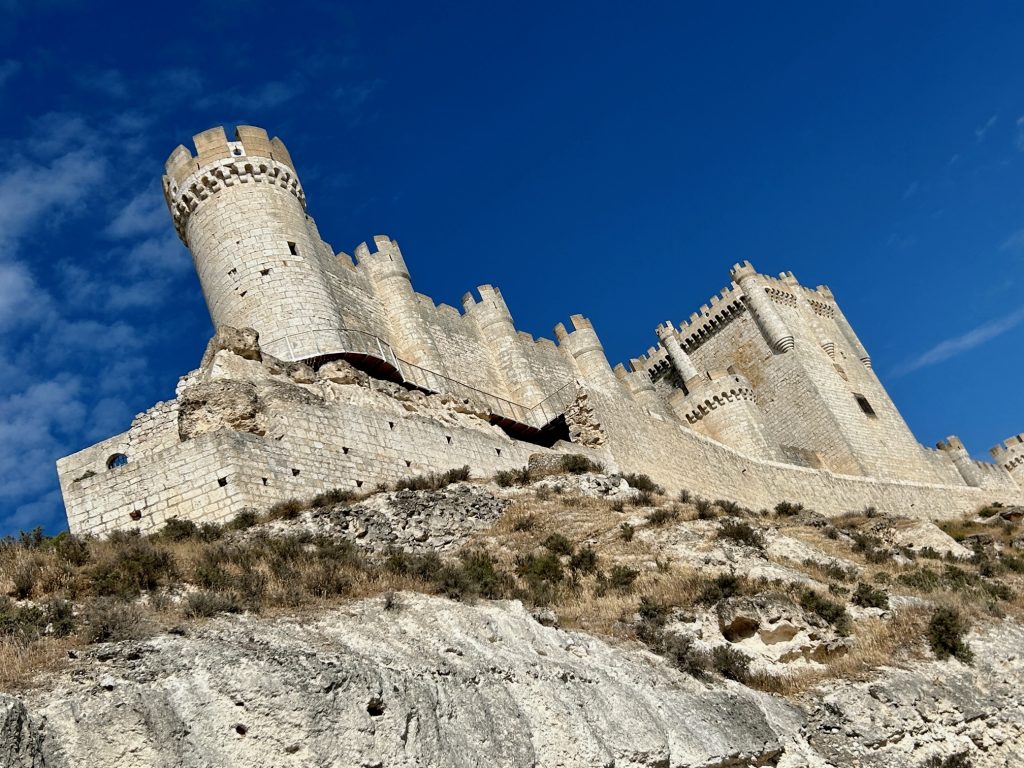
It was an interesting walk both to and from the castle. The approach to the castle from the campsite leads across the Puenta de la Leona to the Plaza de Espana and it’s church, the Iglesia Santa Maria. It continues past the Torre del Reloj (the Clock Tower), which is all that remains of the old Romanesque Church of San Esteban, and then up the hill to the outer walls of the castle. This town side of the hill is dotted with what appear to be large chimneys. These are actually ventilation shafts for the many underground wine cellars in the area. The town is full of large excavated caves where wine used to be stored (and perhaps still is) because of the constant temperatures they keep throughout the year. If not properly ventilated these caves would fill with the poisonous gases which arise during the fermentation process.
Penafiel is located slap bang in the middle of Spain’s second largest wine producing region, the Ribera del Duero, where the focus is on producing quality red wines using the Tempranillo grape. Tempranillo is a relatively hardy grape which is better able to withstand the more extreme climates of the high altitude vineyards to be found in this area – long cold winters and hot dry summers. The better approved wines here are invariably 100% Tempranillo with Crianza wines requiring a minimum 24 months aging of which one year must be in an oak barrel; Reserva wines requiring a minimum 36 months aging with one year in a barrel and; Gran Reserva wines requiring at least 5 years aging of which two years must be in oak barrels.
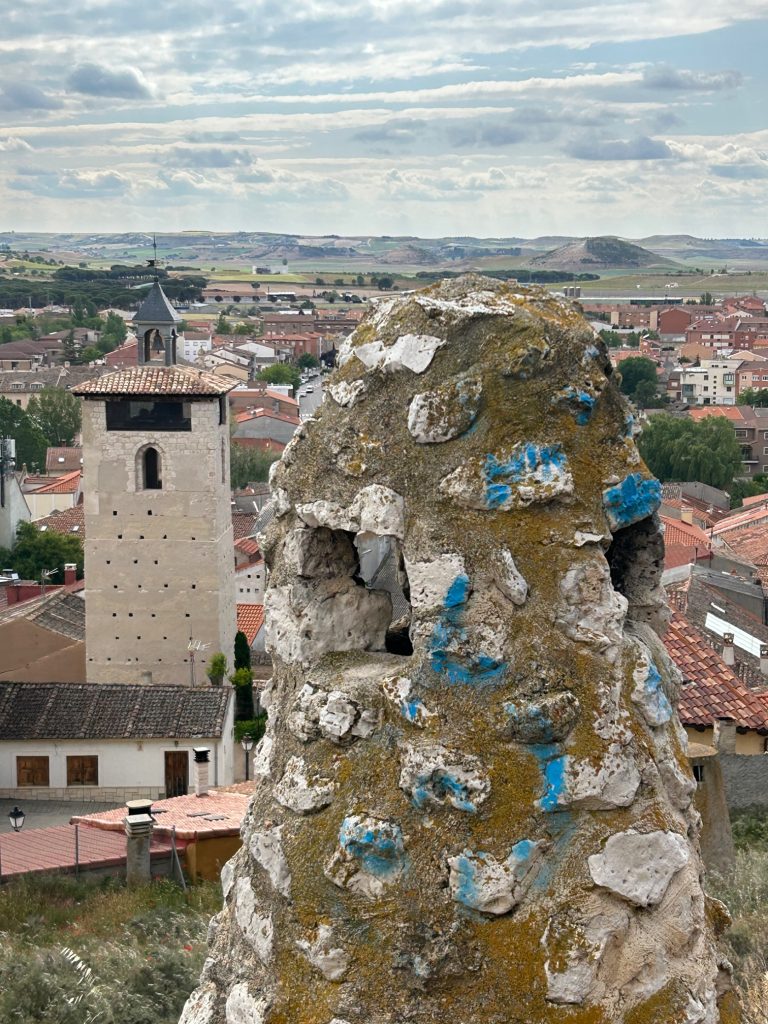
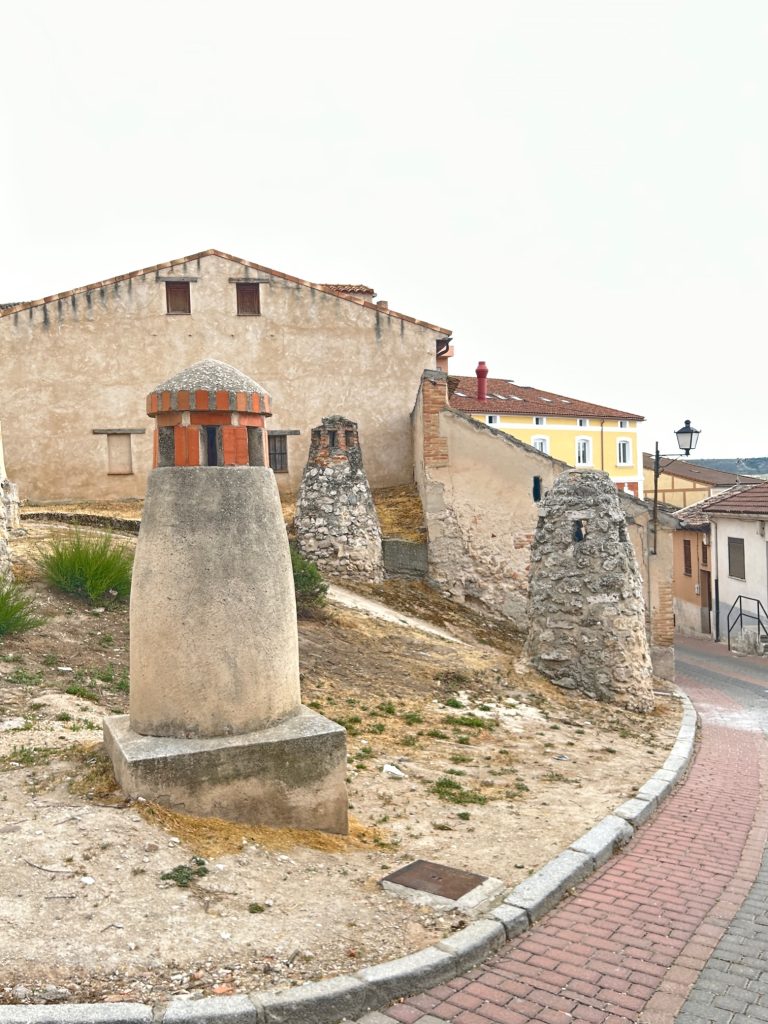
Left: That’s the Clock Tower in the background with a ventilation shaft in the foreground. Right: Several more ventilation shafts fill the hillside.
I returned to town using the castle road, pausing for a glass of wine on the way, and then it was back to exploring. My focus during what remained of the day was towards the Dominican Monastery of Saint Paul (Convento San Pablo) and the elusive but wonderful Plaza del Coso.
I came across the Convento San Pablo first. This Dominican Monastery was built as a fortress in the 13th century but converted into a monastery some time during the 14th century. From the outside the monastery is a strange looking and not very attractive building, an unusual mixture of stone and brick. On the inside, it is something else…

Convento San Pablo – a not particularly attractive mixture of stone and brick although, to be fair some of the Mudejar architecture which was added to the original structure is appealing.
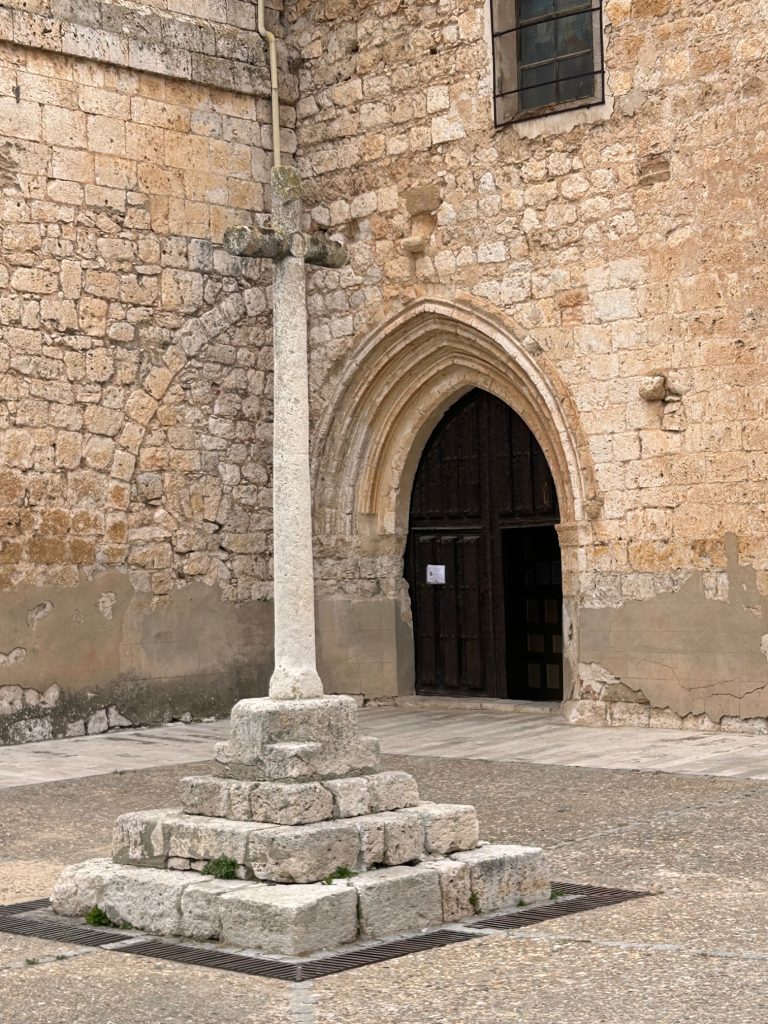
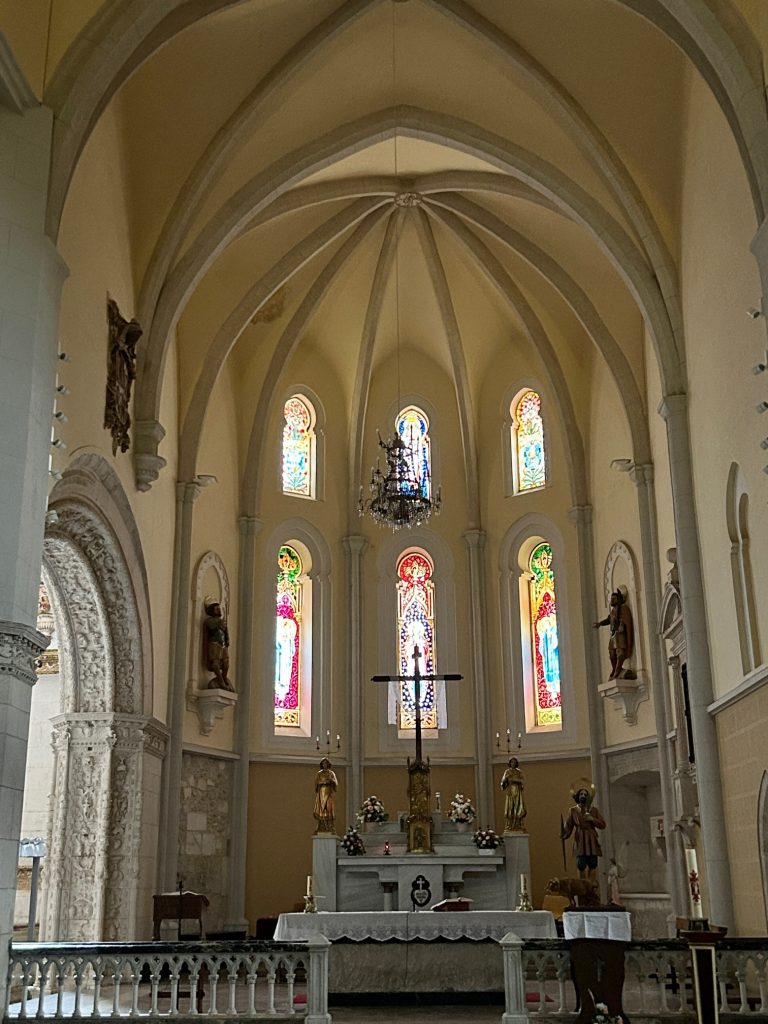
A simple enough entance and central nave…

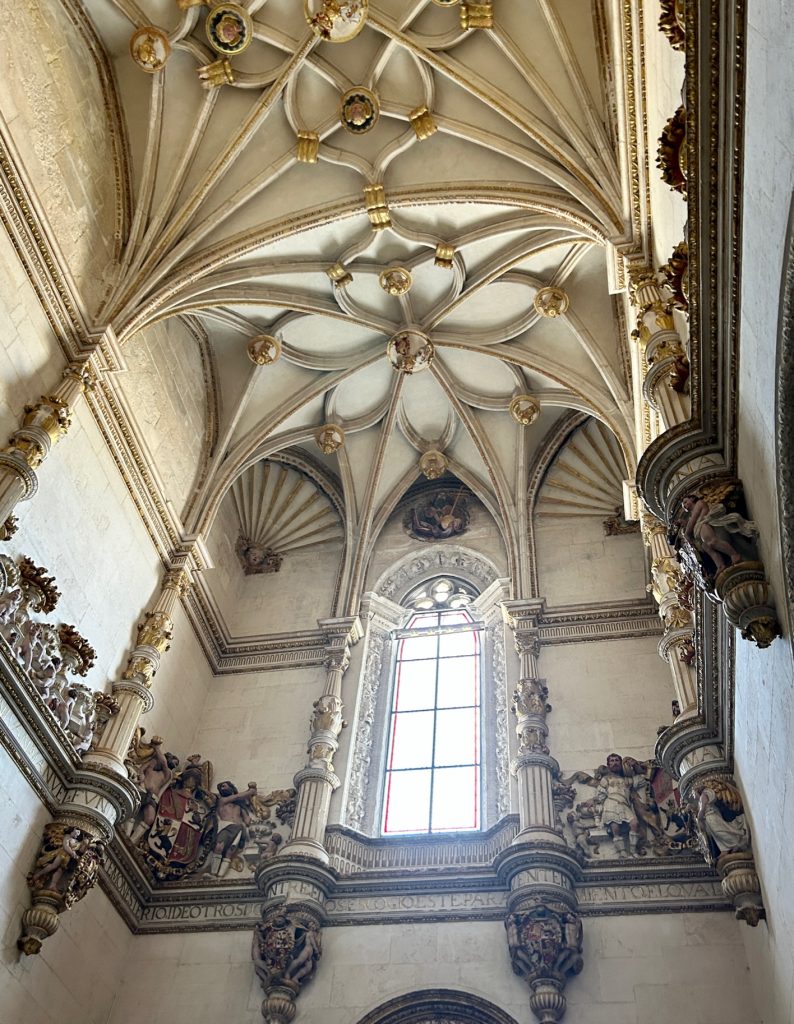
… but with a quite stunning Spanish Renaissance chapel built in 1536
Inside the monastery there is an impressive cloister area but otherwise all is rather simple by Roman Catholic standards… until you see the 16th century funerary chapel of the Infante Don Juan Manuel, Lord of Panafiel. Beautiful.
It took me a while to find the Plaza del Coso. There are just two entances to this large rectangle which is almost wholly enclosed by private houses – a single vehicle entrance from the north and a small gated pedestrian access from the south. I could be forgiven for not immediately recognising the pedestrian access because the gate (which looks like nothing other than the entrance to a garage) was closed. No matter, I persevered and eventually found my way on to the Plaza.
The Plaza is special. Except for the two entrances already mentioned, it is entirely surrounded by three or four storey medieval houses almost all of which have beautiful wooden balconies stretching the whole length of the building on every floor above ground level. These balconies are converted during the Fiestas de Nuestra Senora and San Roque (and at any other time when the situation requires it) into boxes from which those with viewing rights can watch the local bullfights… because this Plaza doubles as a bullring.
Talking of viewing rights, I should explain that since Middle Ages to this day the town council in Penafiel has the right to auction off any room with a window or balcony overlooking the bullring to the highest bidders for the period of the bullfights. Amazing but true.
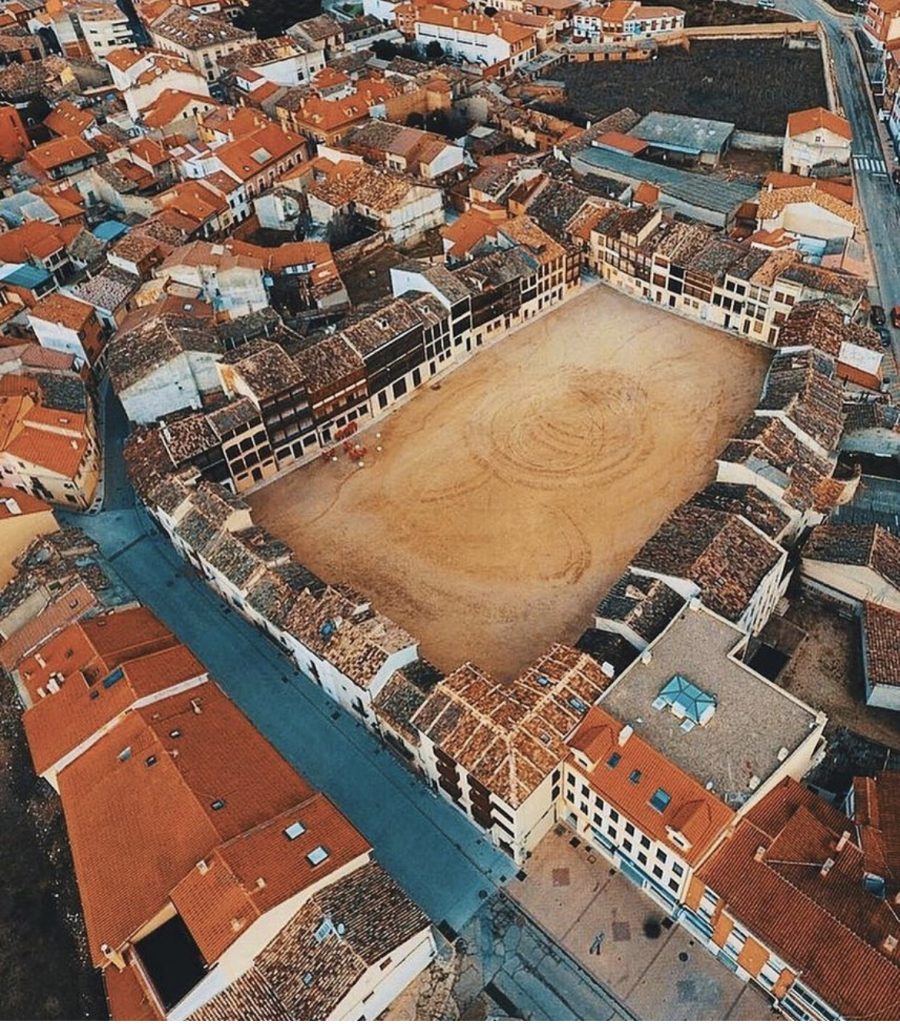
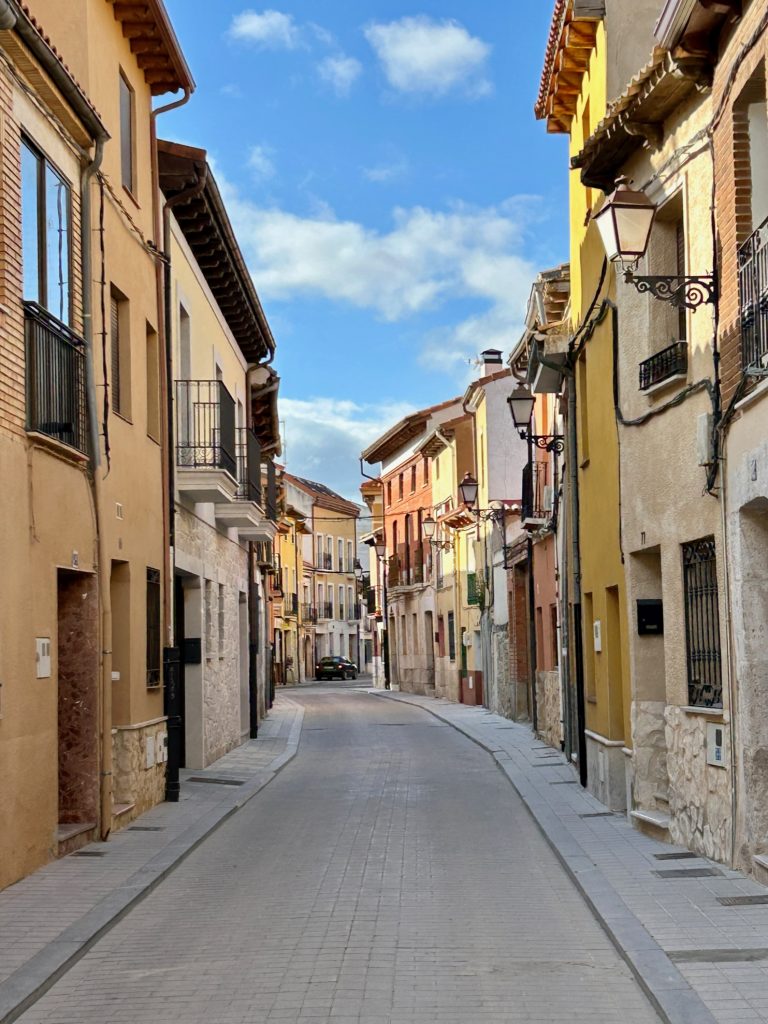
The first photo of the large rectangle which is the Plaza del Coso (taken from up on high) is clearly not mine but the others are. The second photo is of the single road in the town which leads into the Plaza.
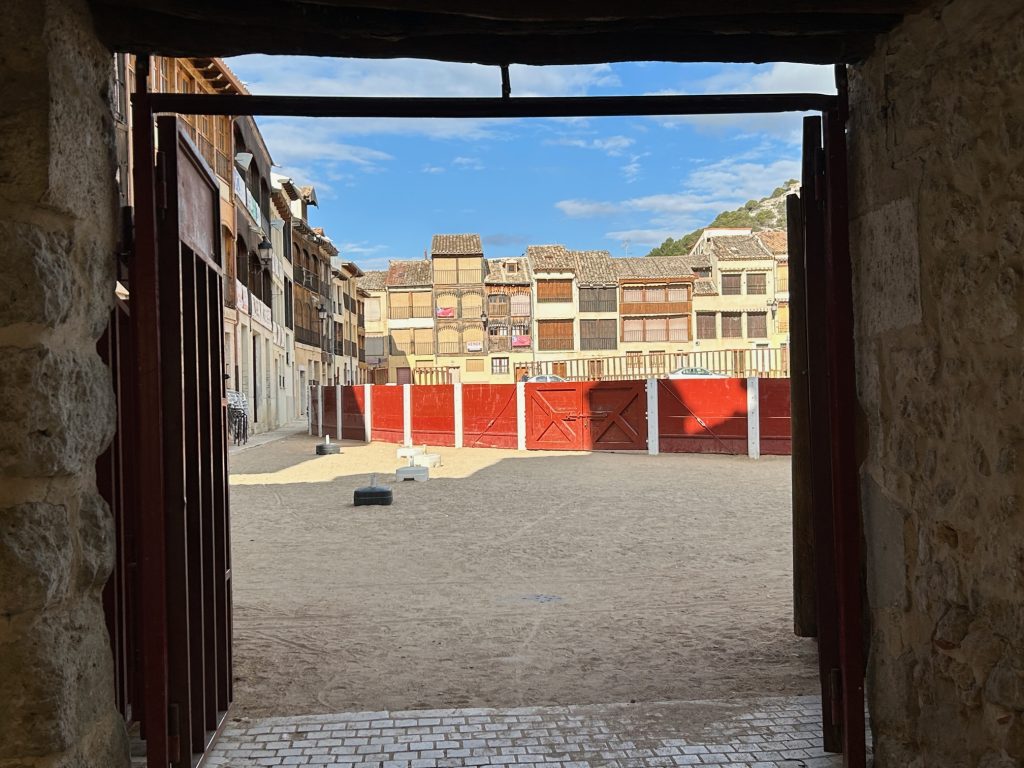
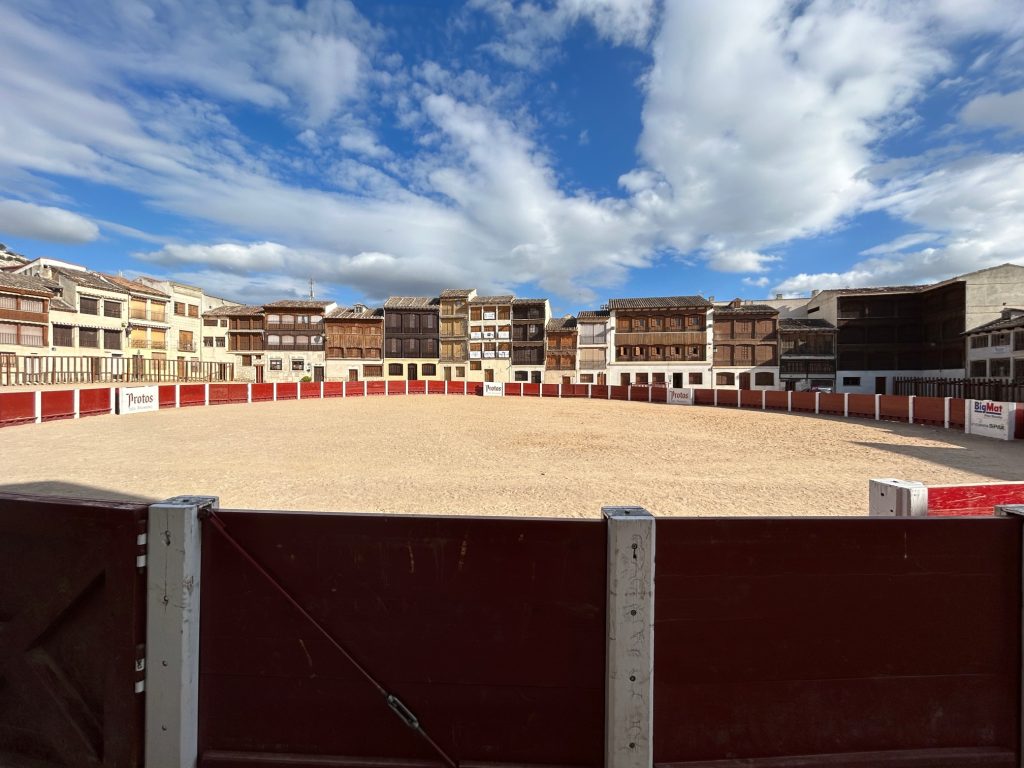
This first photo shows the pedestrian access to the Plaza. As I arrived, workers had just finished installing the wooden bullring which is erected as and when the townsfolk require. We learned later in the day that a festival was planned for the weekend which would include bull-running.
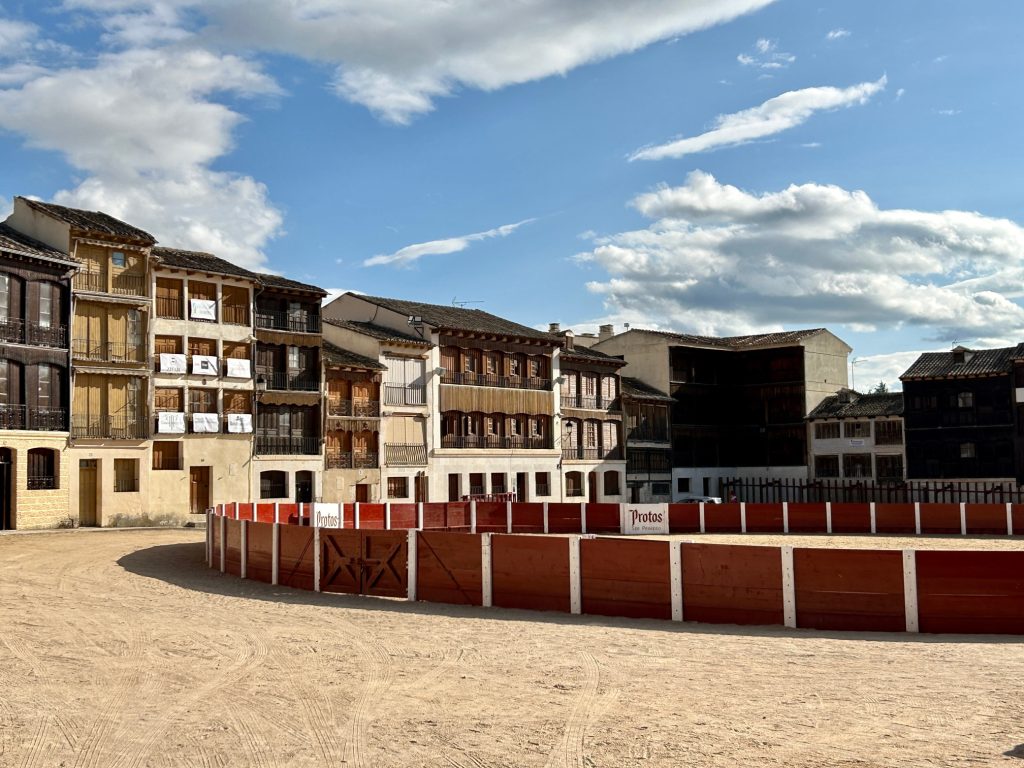
That’s how the Plaza looked like as I walked across it. You can tell it was siesta time.
I’m not into bullfighting unless it be limited to the type that is practised in Provence, where the bull is not harmed – see Saint Remy de Provence blog from May 2023. In Provence, brave athletic ‘rasateurs’ compete against each other, using skill and agility, to collect as many ribbons as possible in as short a time as possible from between the bull’s horns (without getting hurt). Having said that, I think I would have enjoyed attending the bull-running in Penafiel which was scheduled for the following Saturday.

